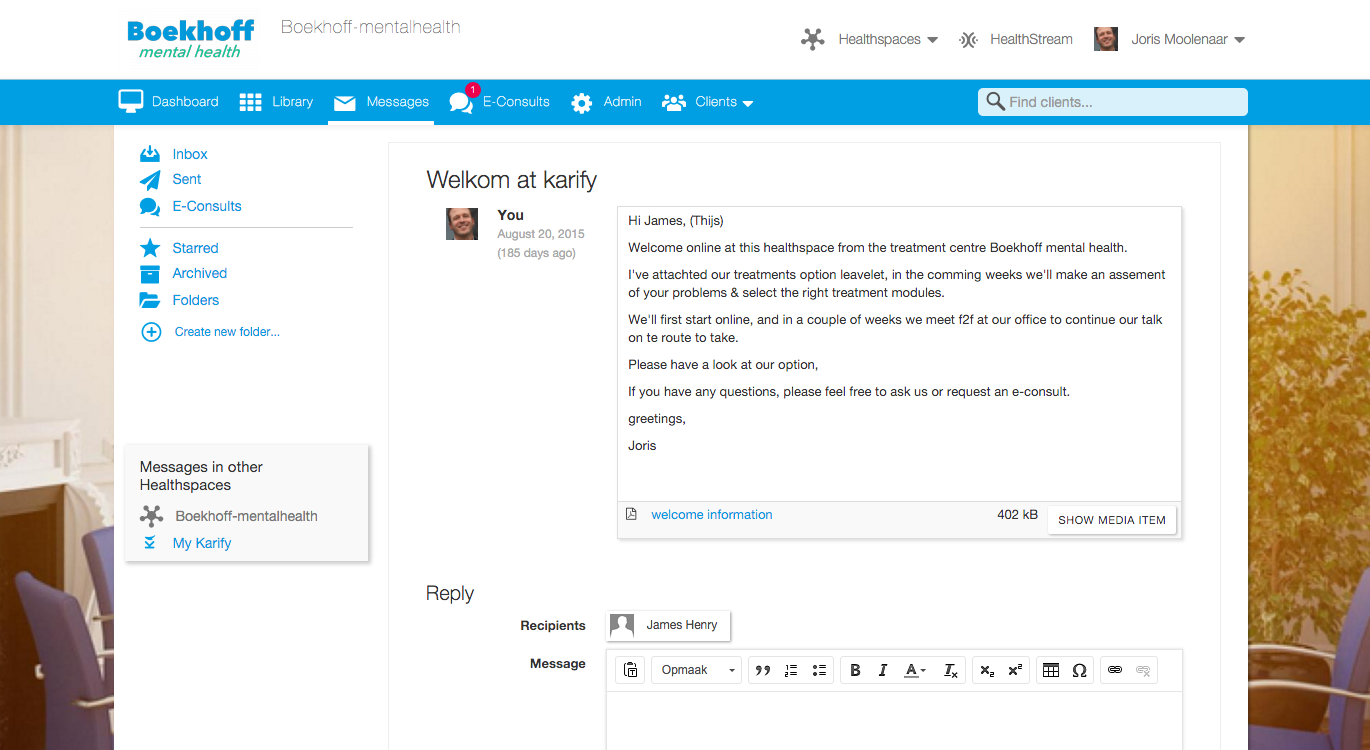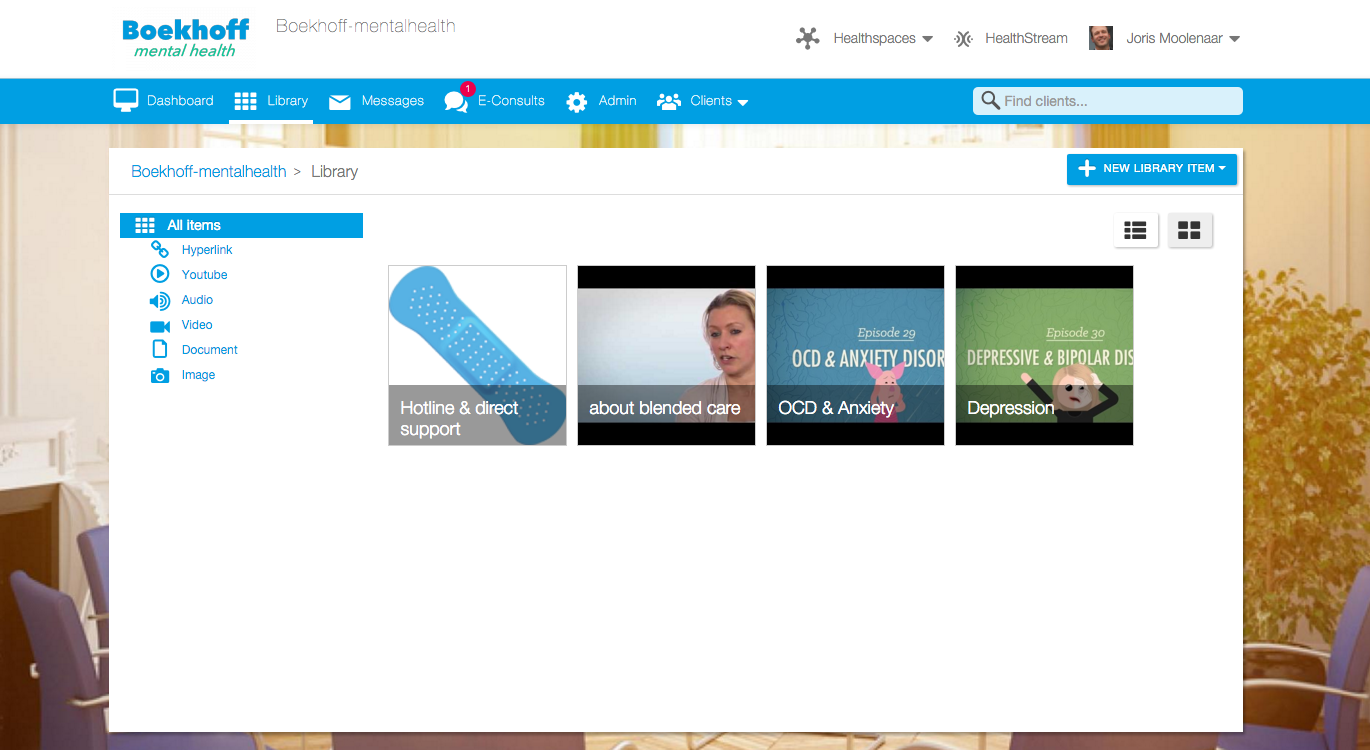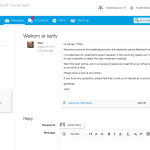Burnout
Burnout
Offer your patients tools to reduce or prevent stress. In this module for people suffering from burnout, patients map their complaints, personal situation and goals. By doing this, they learn to understand the origin of their complaints. Together with your patient you will work on challenging thoughts, worrying less and improving time-management skills. Help yourUse this burnout module to help your patient getting a better grip on life.
 Henriëtta Dijkstra
Henriëtta DijkstraTreatment Manager
About the module
Contains the Distress Thermometer and success registration.
Target audienceYoung adultsAdultsElderly peopleAll prices are including vat
- Description
- Traits
- Contents
Offer your patients tools to reduce or prevent stress. In this module for people suffering from burnout, patients map their complaints, personal situation and goals. By doing this, they learn to understand the origin of their complaints. Together with your patient you will work on challenging thoughts, worrying less and improving time-management skills. Help your patient to get a better grip on his life.
- Set up in 4 phases
- Based on cognitive behavioral therapy
- Usable both online and blended
- Define your own pattern of alternation with face-to-face contacts
- Provide online feedback
- One-on-one contact via secure messages
The module Burnout consists of 4 phases:
- Phase 1: Understanding my problems
In this phase, the patient becomes aware of his symptoms and their origin.
- Phase 2: Self care and stress
The focus of this phase is reducing the amount of stress and to prevent stress in the future. The patient gets to work on different areas of life. Attention is paid to daily structure, sleeping, eating, exercise and stress. Furthermore, the patient starts monitoring his amount of distress by filling in the Distress Thermometer.
- Phase 3: Changing your thoughts
Recognizing and changing negative thought patterns is an important part of this treatment. This is done on the basis of a thought record and registration of successes.
- Phase 4: Looking ahead
This is the final phase of the treatment. The patient writes down the elements of the treatment that helped him and states goals for the future. Also, a relapse prevention plan is drawn up.





